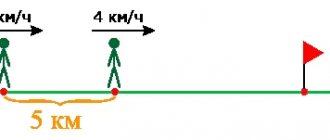Ideas
What to hide For a modern person, no matter how big or small, the wrapper is important. Even the same candy may seem tastier if it is wrapped in a candy wrapper with your favorite movie character, rather than in parchment. Therefore, the learning process should be packaged in a beautiful wrapper: use your favorite Lego men, cars, stickers, prints of super heroes, everything that your child likes, that he is willing to look at for hours, and that he is even willing to sleep with.
Or even make it in the form of a wrist bracelet; I think kids will also appreciate this option.
Regarding the teaching system, choose the one that you think is more understandable to your child and which you can teach “without stuttering.” Some people make watches like real ones without minutes, others hide the minutes under a leaf so they can “peep.” Someone, on the contrary, makes a double dial, where both the hours and minutes are clearly visible, and even the hands move in their own circle, clearly pointing to the number. And someone makes a clock with the task of sticking the corresponding number of minutes on Velcro, and even below you can put in separate numbers what happened (for example, 10:30). Of course, it is more convenient to make such watches with Velcro from felt, although Velcro can also be glued onto cardboard. The main idea!
Or you can improve your regular home clock by sticking minutes in a circle for quick learning.
In a word, what are we still talking about? It's time to get down to business! We have a universal, basic master class coming up that you can take as a basis for your idea.
Teaching time and consolidating material in a playful way
As you know, children perceive information best in a playful way, so parents should take care to create an interesting and fun learning process.
Using the constructor
You can purchase a special kit in the store, which includes a wooden construction set and a notebook with assignments. Thanks to the additional developmental materials that are in the notebook, the baby will not only master the dial, but also prepare for school.
The wooden construction set is a dial with numbers from 1 to 12 and from 1 to 24. The minutes and seconds are marked on the construction set, and there are also movable hands with which the baby can set the time. The constructor can be colored as you wish.
The child assembles such a construction set independently, which will initially help to interest him in the game.
Interesting online games
Today, many children tell time only by electronic mechanisms, because it is much easier. The online game “Learn Time” helps you understand what time a mechanical watch shows. The game invites you to look at an electronic watch and, among the proposed mechanical options, find one that shows the same numbers. After confirming the choice, the baby moves on to the next task.
The educational online game “Watches – Studying Time” introduces the young player to mechanical and electronic mechanisms.
The game is designed for children from 3 to 5 years old. Here you can see a mechanical clock in the shape of a house where a cuckoo lives. There is an electronic clock in the right corner of the screen. First, they determine the time on a mechanical clock, and then set it on an electronic clock. The baby needs to follow the view from the window in order to correctly determine the time of day.
Games to consolidate results
Reinforce your learning with simple practical tasks in a playful way. When performing a certain action: going to bed, waking up, setting the table for dinner, ask your child to watch and tell you what time the clock shows.
When turning on cartoons, a computer game, going on a visit or for a walk, clearly state the planned time interval: 15 minutes, half an hour, an hour - and pay attention to the location of the arrows.
Ask your child for help when doing household chores, for example, ask him to remind you to turn off the stove in 5 minutes, say that it’s time for dinner if the big arrow is on the number 6. Teach punctuality: when going somewhere, talk about the time for getting ready and traveling .
Here are some ways to master time categories playfully:
- " Tell me what time it is ." Set the time on the layout. Take a teddy bear, tell your baby that he is in a hurry to get home and asks what time it is. The kid must answer, if he can’t, help him.
- Make the exercise more difficult by changing the position of the hands on the dial. Repeat several times to consolidate the result.
- " Make a daily routine ." Take the clock model in your hands. Set the arrows to the time when the baby usually wakes up, then, moving their progress, discuss all the actions that he performs during the day, in the morning, at lunch and in the evening.
- " True False ". Place arrows on the layout, ask the child if it is correct that it is such and such a time. He must confirm or refute what was said. If he is in difficulty, ask leading questions.
- " Schedule ". Invite your child to start playing bus station. To dispatch the cars, he himself needs to set the clock hands to the specified time. Use whole numbers first, then complicate the task by using definitions such as “noon”, “quarter of an hour”.
"Cubes"
To play you will need 4 dice and our homemade clock. We throw the dice in pairs. The first pair of cubes will determine the hours, the second pair will determine the minutes. The time that has fallen must be set on a toy watch.
There are also interactive games with clocks on the LogicLike platform. We have more than 3,500 exciting tasks for children of preschool and primary school age that help develop logic, thinking, and memory.
Poems about time for children
It is very good to use short poems during the learning process to remember the basics of time. This will make it more fun and easier for the child to immerse himself in the process of learning this concept.
Here are the funniest and most interesting poems.
Hours and minutes will pass, They will gather together in a day. They have twenty-four hours, and the hands work wonders.
The arrow passes the first circle, - Noon comes to visit us, And she hurries again to mark hour after hour.
The arrow has passed the second circle, - Midnight came to visit us, The day passed, and the night passed, - They ran away for a day.
***
The seconds are counting, the Dwarf has taken the lead, but he doesn’t know yet how short a second is.
Look at the clock - The hands are not here for show: They indicated for us the Second, the minute and the hour.
A second is a thin one, A minute is a long one, And a short one is an hour: This happens every time.
Sixty seconds have passed - We have approached the minute. Well, sixty minutes together will give you a whole hour.
***
The walkers suddenly began. What happened, what happened? The arrows immediately stopped winding Day around the axle. The gray-eyed dial looked at them gloomily: “If you are not to blame, is someone still to blame?” “Maybe,” thought Roma, “the pendulum has no strength, try with your head down. Swing for so many years!”
***
There is a clock on the wall in the room. It is not hanging for decoration. And to the rhythm of knocking: tick-tock, tick-tock. Everyone is given a conventional sign. Day and night change outside the window. The dawn is wonderful. And then for a person all year round, the time has come for daytime worries.
Watch another interesting video about teaching time to children.
A child should be taught to value time and use it wisely from childhood. Ask him what good, useful or enjoyable can be done in an hour, a minute, half an hour. Don’t expect quick results, don’t rush the learning process: time orientation is a complex skill.
The smaller the child, the shorter the lesson should be. So that he quickly learns to understand complex concepts, learn to understand the movement of the mechanism, find out what time it is, buy him a bright wristwatch. This way the child will quickly begin to use the acquired knowledge in practice.
Step-by-step instructions for making a clock from cardboard
Now we will try to do it
under the tree. But first, just a few words about the tools we will use to make, and the children’s possible help.
A few important points:
- We have to cut out blanks from paper, and for this we will need sharp scissors. If you have scissors with rounded edges, then this part of the work can be entrusted to the baby. Otherwise, it’s better, or rather safer, to do it yourself.
- To fasten the arrows on the structure, we again need a sharp object: either nail scissors with sharp edges, or a nail. Only 3 holes. But safety is more important. If the baby asks, of course, you can entrust the work, but only with your safety net.
- Decide how strong the structure you plan to make. Perhaps one sheet of cardboard will not be enough. Then use a base. A layer of thick packaging cardboard, or a few additional regular balls, will serve as the base.
- The last thing is how you will draw, or rather, with what. If you use a compass, then you already have the middle marked, and that’s good. But it is dangerous because of the sharp edge. You can draw it by tracing a plate, cup or bowl around the counter. In this case, we determine the middle using two perpendicular lines. Or, even simpler, bend one of the circles (preferably not the very first one, in order to maintain its attractive appearance) in half twice. The bend point is the middle.
Now we are completely ready! Forward!
Hours and minutes - MK
A cork round hot stand was chosen as the basis for the watch. But you can get by with corrugated cardboard.
Step-by-step photos of production:
Printable templates - enlarge by click
Hours without minutes - MK
- Colored cardboard - 7 sheets (3 for the circle, for the numbers and for the arrows);
- Glue;
- Scissors;
- Pencil;
- Compass;
- Nail;
- Bolt and nut.
Instructions:
How to explain to a child what time is and how it is reflected on the clock
The parent must explain that all adults live according to time. With its help, they know when to wake up and leave the house for work or school. It is also important to say that the arrows can only move forward. The baby is introduced to the concepts of “second”, “minute”, “hour”:
- It is better to purchase a mechanism with a large dial, large hands and 12 digits. You can pick up a training set in bookstores. This set always includes a colorful cardboard dial.
- It should be said that the short hand shows the hours, the long hand shows the minutes, and the one that moves quickly shows the seconds. The second hand can be ignored at first.
Clock for teaching a child - The child must learn that there are 24 hours in 1 day, which means that the hour hand circles the dial twice.
- An adult explains that an hour is when the long hand points to the number 12, and the short hand stops at a certain number.
It is advisable to regularly tell your child what time there will be breakfast, lunch, sleep or a walk today. You can ask him to complete some task, for example, in two minutes. It is imperative to show how the position of the arrows changed in two minutes.
See also:
How to teach a child to count in his head (grades 1-2) - methods and examples




